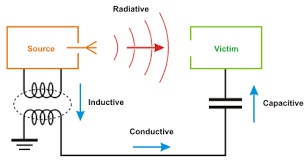PCB CONNECTORS AND THEIR TYPES
What are PCB Connectors?
There are many different types of PCB connectors, which is not
surprising, given the many different types of components and devices that are
attached with these connectors. Some printed circuit board connectors are
designed to operate under stressful conditions, to support relatively heavy
loads and to provide stability and safety under those circumstances. Other
printed circuit board connectors are much more delicate.
Printed circuit board connectors often come in kits, with both ends
of the connection and the hardware required to install the connector to the
printed circuit board. Some printed circuit board connectors can only work with
one type of a connector and others are designed to work with stripped wires,
making it possible to hook up devices generically, without relying upon a
specific type of connector to complete the circuit.
TYPES OF PCB CONNECTORS----
Rectangular connectors--Rectangular
connectors are used widely in modular
machine design, factory automation,
robotics, transportation and power
generation. Both have benefits - for
example, circular connectors are
advantageous when a cable is passing
through a cable tray. Rectangular
connectors offer other benefits, such
as easy customization with standard
modules and space saving
Circular connectors
Circular connectors are common
because they have been the standard for
a long time. This does not mean that they
are the best solution for every application
as the benefits of rectangular connectors
often outweigh the benefits of circular
connectors. For example, any side-by-side
circular connector arrangement requires
additional space for accessibility to twist
and lock in the connectors. A rectangular
connector arrangement does not require
as much space in between connectors.
Terminal blocks
A terminal block is a screw-type electrical
connector where the wires are clamped down to the metal part by a screw. It is
a connector which allows more than one circuit to connect to another circuit.
It often contains two long aluminum or copper strips that are designed to
connect different components. These strips create a bus bar for power
distribution that is sent to the connected components. A barrier strip is
composed of several screw terminals.
Terminal blocks are
modular, insulated blocks that secure two or more wires together.
Terminal blocks are used to secure and/or terminate wires and, in their
simplest form, consist of several individual terminals arranged in a long
strip. Terminals are useful for connecting wiring to a ground or, in the case
of electrical power, for connecting electrical switches and outlets to the
mains.
Terminal bodies
typically consist of a copper alloy with the same expansion coefficient as the
wire intended for use. This not only prevents loosening because of differing
expansion rates but also reduces corrosion caused by electrolytic action
between two different metals.
To be continued in next blog..
Thanks for reading..









Comments
Post a Comment